Books by Tobias Keiling
Life is an adventure. László Tengelyi’s phenomenology of action
The Routledge Handbook of the Phenomenology of Agency
Muße und Moderne, 2018
‚Muße und Moderne' stehen in einem spannungsreichen Verhältnis, das zeigen die hier versammelten ... more ‚Muße und Moderne' stehen in einem spannungsreichen Verhältnis, das zeigen die hier versammelten Beiträge aus Philosophie, Kultur- und Literaturwissenschaft. Anhand von amerikanischen, englischen, deutschen und französischen Beispielen geben sie einen Überblick
über philosophische, soziokulturelle und literarische Muße-Diskurse. Verstanden als Makro-Epoche, die um 1800 beginnt, sucht sich die Moderne auch bei der Muße von 'klassischen' Vorgaben abzusetzen. Die moderne Arbeitsgesellschaft mit ihren Aporien veranlasst dazu,
alternative Lebensformen und soziale Ordnungen zu erwägen, was vielfach unter dem Stichwort 'Muße' geschieht. Die Beiträge dieses Bandes erkunden das kulturelle Wissen im Hinblick darauf, wie Muße unter den Bedingungen der Moderne zu denken ist.

Opened Grounds: Studies on Foundation and Truth in Phenomenology
This dissertation gathers four studies on related topics in the phenomenological tradition and Ma... more This dissertation gathers four studies on related topics in the phenomenological tradition and Martin Heidegger’s philosophy in particular. Methodologically, it addresses the question as to how a reading of a philosophical text can offer access to the phenomena relevant for philosophy. Beginning with a reading of one his latest lectures on the end of philosophy and the the potential of phenomenology (The End of Philosophy and the Task of Thinking), the first chapter questions Heidegger’s dismissal of the notion of ground in this lecture, arguing that an innovative reading of a passage from Contributions to Philosophy can address a problem left unresolved in the lecutre. Instead of reducing it to its alleged function in metaphysics, I propose to explore the semantic and descriptive potential of ‘ground’ and related notions outside of the ontological and metaphysical discourse.
The second chapter inquires about the particular position of On the Origin of the Work of Art in the context of Heidegger’s theory of truth. In contrast to an interpretation highlighting the function of art in the so- called history of Being, the artwork essay is shown to display a specific form of transcendental argument aiming to disclose the ‘clearing’ as the condition of possibility of phenomena. Particular attention is paid to Heidegger’s discussion of untruth as concealment because the distinction between a denial (Versagen) and a restraint (Verstellen) of truth elaborates an important difference in discussing phenomena of negativity.
The third chapter explores the notion of ‘earth.’ The attempt is made to distinguish four phenomenal traits specific to earth by not only relying on Heidegger’s discussion and the examples he gives in On the Origin of the Work of Art but by also connecting these to discourses on earth both in one of Husserl’s later manuscripts (Foundational Investigations of the Phenomenological Origin of the Spatiality of Nature) and the philosophy of nature in Hegel’s Phenomenology of Spirit. The discussion is oriented by an interpretation of two sculptures by Andy Goldsworthy; I reflect both on their methodological role for describing phenomena associated with earth and on the status of Heidegger’s own examples. The chapter aims in particular to establish an explanatory priority of phenomene associated with earth over the lived body, showing that experiences featuring the phenomenal trat sof earth are irreducible to eminenty sensible experiences as experiences for my bodily being.
The fourth chapter takes its departure from the German word Erklüftung that Heidegger mentions in Contributions of Philosophy. In discussing its particular position in Heidegger’s discourse on both projection (Entwurf) and ground (Grund) in Being and Time, Contributions to Philosophy, The Origin of the Work of Art and Art and Space, I show why Erklüftung, although it can be established as the description of a specific phenomenon by referring to other occurrences of the word (such as in Goethe’s writings on geology), I maintain that it is not apt for the purpose to which Heidegger submits the word. The failure of Erklüftung thus makes an important contributions to the understanding of Heidegger’s discourse on ground.
The conclusion offers a reading of the second half of Heidegger’s last lecture course The Principle of Reason (Der Satz vom Grund) in order to situate the four studies vis-à-vis Heidegger’s late comprehensive treatment of ground. His attempt to determine the meaning of ground and its equivalents in Latin ratio and Greek λόγος is distinguished from the regress to the beginning of the history of Being that the lecture develops. In contrast to this ontological way to determine ground, I defend the view that the semantic explorations and descriptions Heidegger gives offer more adequate access to the phenomena of ground.
Die Engführung von Muße und theoretischem Tun, die Aristoteles paradigmatisch in der Nikomachisch... more Die Engführung von Muße und theoretischem Tun, die Aristoteles paradigmatisch in der Nikomachischen Ethik entwickelt, hat eine Vor- und eine lange Nachgeschichte bis in die gegenwärtige Philosophie und Theologie hinein. Begründet wird die Engführung von Muße und Theorie bei Aristoteles anthropologisch, weil sich in einer kontemplativen Lebensform die Möglichkeiten der menschlichen Natur auf vollendete Weise verwirklichen.
Die Beiträge in diesem Band untersuchen ideengeschichtliche Modelle einer Verbindung von Theorie und Muße daraufhin, wie diese sich zur Frage einer anthropologischen Fundierung der Theorie verhalten. Sie fragen nach der Anthropologie der Theorie.
Mit einem Leben in Muße ist das Versprechen eines selbstbestimmten und erfüllten Daseins verbunde... more Mit einem Leben in Muße ist das Versprechen eines selbstbestimmten und erfüllten Daseins verbunden. Dabei ist keineswegs klar, was Muße ausmacht. Durch die Unterscheidung von Arbeit und Freizeit allein ist das Spezi kum der Muße nicht zu fassen. Denn Muße ist ‚mehr' und anderes als Freizeit -aber was ist das für ein Mehr? Was für ein Glück verspricht die Muße? Gibt es eine Freiheit, die sich nur in Muße realisiert? Der Band nähert sich dem Thema der Muße aus den disziplinären Perspektiven von Philosophie, Theologie, Soziologie, Psychologie und Medizin. Diese Perspektiven erschließen ein Feld von Konzepten, von denen her sich Muße verstehen lässt: Arbeit und Freizeit, Kontemplation, Gelassenheit und Achtsamkeit.
Trotz aktueller Debatten über Determinismus und Freiheit ist der Sinn von Freiheit weit davon ent... more Trotz aktueller Debatten über Determinismus und Freiheit ist der Sinn von Freiheit weit davon entfernt, ein klar umrissenes philosophisches Problem darzustellen. Betrachtet man Versuche, menschliche Freiheit zu beweisen, und Diskussionen um die soziale Normierung von Freiheit, so ist selten klar, ob hier von einem einheitlichen Phänomen die Rede ist. Aufgrund der Komplexität der Debatten und der historischen Tiefe des Problems lässt sich die Freiheit nicht einer einzelnen Teildisziplin der Philosophie zuordnen. Wer sich auf eine Definition oder einen Bestimmungsversuch des Begriffs einlässt, muss zugleich das Verhältnis von Theorie und Praxis klären. Die Untersuchung der Freiheit und der mit ihr verbundenen Phänomene führt daher nicht zuletzt zu einer immer wieder neu zu vollziehenden Selbstverortung der Philosophie.

»Mit Heideggers Eintreffen in Marburg begann … für das philosophische Denken eine neue Epoche.« –... more »Mit Heideggers Eintreffen in Marburg begann … für das philosophische Denken eine neue Epoche.« – So erinnert sich Hans-Georg Gadamer an Heideggers Marburger Zeit, und nicht nur Heideggers eigenes Schaffen, auch die anhaltende Wirkung von Sein und Zeit und den anderen in Marburg verfassten Schriften und Vorlesungen, geben diesem Diktum recht. Seit diese Texte in der Gesamtausgabe vorliegen, wird immer deutlicher, wie sich Heidegger in Marburg philosophisch entwickelt hat, welche Ideen, Lektüren und Begegnungen diese Zeit prägten und welche Wege Heideggers Denken in Marburg nahm. Als Ergebnis der »Übergangsarbeit« der Marburger Zeit hat Heidegger mit Sein und Zeit einen Text geschaffen, der zur Mitte seines Denkens werden sollte, und dies auch und gerade deshalb, weil dieses Werk Heideggers unvollendet geblieben ist. In einer Anmerkung zur letzten Seite heißt es in diesem Sinne, das Buch stelle einen Weg des Denkens da, aber »nicht ›den‹ einzigen«. Dass Sein und Zeit das in der Einleitung gesteckte Ziel nicht erreicht und Fragment geblieben ist, ist nur ein Anzeichen für die Komplexität, die wesentliche Schwierigkeit und innere Spannung der Themen, Argumente und Konstellationen, mit denen Heidegger sich in Marburg beschäftigt hat. ...

Heideggers Der Ursprung des Kunstwerks ist einer der wichtigsten Beiträge zur philosophischen Äst... more Heideggers Der Ursprung des Kunstwerks ist einer der wichtigsten Beiträge zur philosophischen Ästhetik, zudem ein Schlüsseltext für Heideggers gesamtes Denken. Aber nicht ganz zu Unrecht gilt die Lektüre bei Studierenden und Anfängern im Denken Heideggers als schwierig. Dieser Band soll das Verständnis des Kunstwerkaufsatzes anleiten und erleichtern: In 18 Beiträgen stellen die Autoren in ihren Interpretationen die Grundgedanken und philosophischen sowie literarischen Quellen des Textes vor, verorten ihn in Heideggers Werk und und skizzieren seine philosophische Wirkung. Dieser erste kooperative Kommentar zum Kunstwerkaufsatz schließt an das Vorwissen und die Interessen seiner Leser in vielerlei Hinsichten an, ermöglicht so einen leichteren Einstieg in die Lektüre und erschließt den Text aus verschiedenen Perspektiven der Philosophie und der Kunstwissenschaft. Einen ersten Schwerpunkt bilden dabei thematische Einführungen, die das Verhältnis von Kunstwerken zu anderen Dingen, zur Technik, zur Natur, zu Wahrheit und Geschichte bestimmen. So erläutern die Beiträge Heideggers Bestimmung der Gestalt von Kunstwerken und seine These vom Vorrang der Dichtung. Ein zweiter Teil geht den Quellen des Kunstwerkaufsatzes in der Philosophie (Aristoteles, Heraklit, Hegel) und in der Literatur (Hölderlin, Meyer, Rilke) nach. Ein dritter Teil erläutert, wie Der Ursprung des Kunstwerks Heideggers eigenes Denken beeinflusst: seine Auseinandersetzung mit Nietzsche, seine Faszination für Paul Klee, sein nachdenken über Phänomenologie und über Sprache. Ein vierter Teil schließlich ist der Wirkung von Heideggers Text auf andere Autoren gewidmet: Adorno, die französische Phänomenologie (Lévinas, Derrida u.a.) sowie Gadamer und andere Autoren der hermeneutischen Tradition (Sallis, Figal).
Papers online by Tobias Keiling
Einleitung – Phänomenologische Metaphysik
Phänomenologische Metaphysik, 2020
in: Figal/Hubert/Klinkert (eds.), Die Raumzeitlichkeit der Muße, 2016
JSTOR is a not-for-profit service that helps scholars, researchers, and students discover, use, a... more JSTOR is a not-for-profit service that helps scholars, researchers, and students discover, use, and build upon a wide range of content in a trusted digital archive. We use information technology and tools to increase productivity and facilitate new forms of scholarship. For more information about JSTOR, please contact support@jstor.org.
Jürgasch/Keiling (eds.) Anthropologie der Theorie, 2017
JSTOR is a not-for-profit service that helps scholars, researchers, and students discover, use, a... more JSTOR is a not-for-profit service that helps scholars, researchers, and students discover, use, and build upon a wide range of content in a trusted digital archive. We use information technology and tools to increase productivity and facilitate new forms of scholarship. For more information about JSTOR, please contact support@jstor.org.
Heidegger’s later philosophy is marked by two conflicting claims about phenomenology. On the one ... more Heidegger’s later philosophy is marked by two conflicting claims about phenomenology. On the one hand, phenomenology and philosophy generally is tasked with “responding to the claim of what is to be thought” in a novel and unprecedented manner. On the other hand, Heidegger recognizes that there have been earlier attempts at thus doing justice to phenomena; in the ontological commitments of earlier thinkers, Heidegger finds accounts of the “things themselves,” each of which has different implications for what phenomenology should concern itself with. Phenomenology, as Heidegger conceives it, should thus both incorporate the history of philosophy and exceed it, yet it is unclear how these ideas can be reconciled. This chapter calls this problem the “dilemma of the historicity of phenomenology” and identifies different versions of it in Heidegger’s works after 1935/6.
One of the most prominent notions in Heidegger’s thinking about art is that of the earth (die Erd... more One of the most prominent notions in Heidegger’s thinking about art is that of the earth (die Erde). This paper probes the phenomenological potential of Heidegger’s concept by turning to the work of contemporary British artist Andy Goldsworthy. Drawing from Heidegger’s theoretical writings as well as his analysis of a poem by C.F. Meyer in “The Origin of the Work of Art” and his 1936–37 seminar on Schiller, I show that Goldsworthy’s sculptural art exemplifies different phenomenal traits of the “earth.” To supplement Heidegger’s discussion, both Husserl’s claim that the earth defines the “spatiality of nature” and the role of the earth in Hegel’s philosophy of nature are taken into account.
Logische und andere Räume. Wittgenstein und Blumenberg über Unbestimmtheit
Spatial metaphors have peculiar prominence in accounts of rationality,
such as in the phrase “spa... more Spatial metaphors have peculiar prominence in accounts of rationality,
such as in the phrase “space of reason” made prominent by Wilfrid Sellars and John McDowell. This article attempts to understand the potential of such comparisons of reason to space, taking Wittgenstein’s metaphor of “logical space” as exemplary. As Hans Blumenberg observes in his reading of Wittgenstein and in contrast to its stated aim, the account of “logical space” in the Tractatus does not achieve a final delimitation of reason. Wittgenstein’s discussion of different forms of rationality rather leads him to consider a plurality of spaces. Asking how these different spaces or fields of meaning can be congruent at all, Wittgenstein is led to consider the indeterminacy of space itself in contrast to the different localizations it allows.

The pleasure of the non-conceptual: Theory, leisure and happiness in Hans Blumenberg’s philosophical anthropology
The article discusses the place of leisure in Hans Blumenberg’s philoso- phical anthropology, foc... more The article discusses the place of leisure in Hans Blumenberg’s philoso- phical anthropology, focusing on “Theorie der Unbegrifflichkeit” (2007). According to Blumenberg, the tradition of philosophical anthropology unjustly reduces human rationality to the attempt of self-preservation. Not only is the actual process of anthropogenesis better described as led by a logic of prevention, not of preservation. Sedentary life, product of preventive behavior, not only secures survival but grants leisure as the condition of culture. Yet cultural practices, although an eminent product of human rationality, cannot be explained by the logic of either self- preservation or prevention. Blumenberg thus argues that within philosophical anthropology, rationality can best be explained in is orientation towards happiness, an orientation encompassing not only preventive, conceptual forms of reason, but also contemplative, non-conceptual uses, such as in myth and mysticism. As the condition for articulating a self-understanding more adequate than self-preservation or prevention, leisure thus assumes a central place in determining human nature. It is in leisure that rationality is experienced as a source of happiness.
Hermeneutic Humanism
Taking its cue from Bernard Williams’ understanding of philosophy and its history as attempts
to ... more Taking its cue from Bernard Williams’ understanding of philosophy and its history as attempts
to understand ourselves as human beings, the paper presents Gadamer’s discussion
of the four “guiding concepts of humanism” (culture, common sense, judgment, and taste)
at the outset of Truth and Method. I argue that this discussion stands in tension with claims
concerning the ontological status of understanding and his philosophy of history made
alantde rM ine tthhoed book. In conclusion, I sketch a reading of Gadamer that would reorient Truth towards the question what language, history and art can contribute to our
self-understanding as human beings, fathoming the potential of a hermeneutic humanism.
This contribution examines Derridas interpretation of Celan in Schibboleth. In it, Derrida constr... more This contribution examines Derridas interpretation of Celan in Schibboleth. In it, Derrida construes a ‚quasi-metaphysics‘ of time and date, oriented at the descriptions of time in Heidegger’s Being and Time. Also, in anticipation of Donner le temps, Derrida hints at a phenomenology of (given) time. In such a way, Derrida’s inter|pretation [178] of Celan is determined by a controversy with Jean-Luc Marion that uses the figure of the date to construe Celan’s poetry as a theory of givenness. Yet an interpretation of The Meridian shows that Celan mainly uses metaphors of space, not of time, to develop his poetology. Thus, it is structurally rather close to Heidegger’s later philosophy of language, not to the transcendental philosophy of Being and Time.
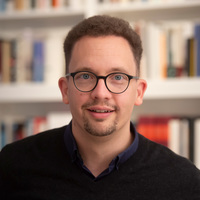

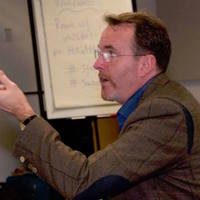
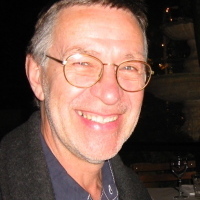
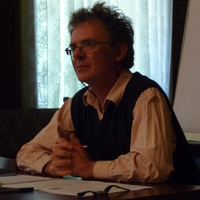


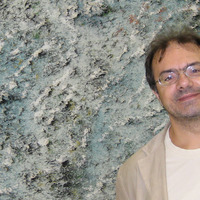
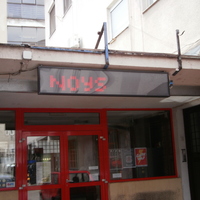

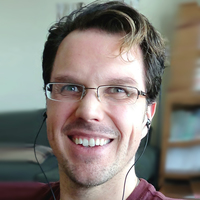
Uploads
Books by Tobias Keiling
über philosophische, soziokulturelle und literarische Muße-Diskurse. Verstanden als Makro-Epoche, die um 1800 beginnt, sucht sich die Moderne auch bei der Muße von 'klassischen' Vorgaben abzusetzen. Die moderne Arbeitsgesellschaft mit ihren Aporien veranlasst dazu,
alternative Lebensformen und soziale Ordnungen zu erwägen, was vielfach unter dem Stichwort 'Muße' geschieht. Die Beiträge dieses Bandes erkunden das kulturelle Wissen im Hinblick darauf, wie Muße unter den Bedingungen der Moderne zu denken ist.
The second chapter inquires about the particular position of On the Origin of the Work of Art in the context of Heidegger’s theory of truth. In contrast to an interpretation highlighting the function of art in the so- called history of Being, the artwork essay is shown to display a specific form of transcendental argument aiming to disclose the ‘clearing’ as the condition of possibility of phenomena. Particular attention is paid to Heidegger’s discussion of untruth as concealment because the distinction between a denial (Versagen) and a restraint (Verstellen) of truth elaborates an important difference in discussing phenomena of negativity.
The third chapter explores the notion of ‘earth.’ The attempt is made to distinguish four phenomenal traits specific to earth by not only relying on Heidegger’s discussion and the examples he gives in On the Origin of the Work of Art but by also connecting these to discourses on earth both in one of Husserl’s later manuscripts (Foundational Investigations of the Phenomenological Origin of the Spatiality of Nature) and the philosophy of nature in Hegel’s Phenomenology of Spirit. The discussion is oriented by an interpretation of two sculptures by Andy Goldsworthy; I reflect both on their methodological role for describing phenomena associated with earth and on the status of Heidegger’s own examples. The chapter aims in particular to establish an explanatory priority of phenomene associated with earth over the lived body, showing that experiences featuring the phenomenal trat sof earth are irreducible to eminenty sensible experiences as experiences for my bodily being.
The fourth chapter takes its departure from the German word Erklüftung that Heidegger mentions in Contributions of Philosophy. In discussing its particular position in Heidegger’s discourse on both projection (Entwurf) and ground (Grund) in Being and Time, Contributions to Philosophy, The Origin of the Work of Art and Art and Space, I show why Erklüftung, although it can be established as the description of a specific phenomenon by referring to other occurrences of the word (such as in Goethe’s writings on geology), I maintain that it is not apt for the purpose to which Heidegger submits the word. The failure of Erklüftung thus makes an important contributions to the understanding of Heidegger’s discourse on ground.
The conclusion offers a reading of the second half of Heidegger’s last lecture course The Principle of Reason (Der Satz vom Grund) in order to situate the four studies vis-à-vis Heidegger’s late comprehensive treatment of ground. His attempt to determine the meaning of ground and its equivalents in Latin ratio and Greek λόγος is distinguished from the regress to the beginning of the history of Being that the lecture develops. In contrast to this ontological way to determine ground, I defend the view that the semantic explorations and descriptions Heidegger gives offer more adequate access to the phenomena of ground.
Die Beiträge in diesem Band untersuchen ideengeschichtliche Modelle einer Verbindung von Theorie und Muße daraufhin, wie diese sich zur Frage einer anthropologischen Fundierung der Theorie verhalten. Sie fragen nach der Anthropologie der Theorie.
Papers online by Tobias Keiling
such as in the phrase “space of reason” made prominent by Wilfrid Sellars and John McDowell. This article attempts to understand the potential of such comparisons of reason to space, taking Wittgenstein’s metaphor of “logical space” as exemplary. As Hans Blumenberg observes in his reading of Wittgenstein and in contrast to its stated aim, the account of “logical space” in the Tractatus does not achieve a final delimitation of reason. Wittgenstein’s discussion of different forms of rationality rather leads him to consider a plurality of spaces. Asking how these different spaces or fields of meaning can be congruent at all, Wittgenstein is led to consider the indeterminacy of space itself in contrast to the different localizations it allows.
to understand ourselves as human beings, the paper presents Gadamer’s discussion
of the four “guiding concepts of humanism” (culture, common sense, judgment, and taste)
at the outset of Truth and Method. I argue that this discussion stands in tension with claims
concerning the ontological status of understanding and his philosophy of history made
alantde rM ine tthhoed book. In conclusion, I sketch a reading of Gadamer that would reorient Truth towards the question what language, history and art can contribute to our
self-understanding as human beings, fathoming the potential of a hermeneutic humanism.
über philosophische, soziokulturelle und literarische Muße-Diskurse. Verstanden als Makro-Epoche, die um 1800 beginnt, sucht sich die Moderne auch bei der Muße von 'klassischen' Vorgaben abzusetzen. Die moderne Arbeitsgesellschaft mit ihren Aporien veranlasst dazu,
alternative Lebensformen und soziale Ordnungen zu erwägen, was vielfach unter dem Stichwort 'Muße' geschieht. Die Beiträge dieses Bandes erkunden das kulturelle Wissen im Hinblick darauf, wie Muße unter den Bedingungen der Moderne zu denken ist.
The second chapter inquires about the particular position of On the Origin of the Work of Art in the context of Heidegger’s theory of truth. In contrast to an interpretation highlighting the function of art in the so- called history of Being, the artwork essay is shown to display a specific form of transcendental argument aiming to disclose the ‘clearing’ as the condition of possibility of phenomena. Particular attention is paid to Heidegger’s discussion of untruth as concealment because the distinction between a denial (Versagen) and a restraint (Verstellen) of truth elaborates an important difference in discussing phenomena of negativity.
The third chapter explores the notion of ‘earth.’ The attempt is made to distinguish four phenomenal traits specific to earth by not only relying on Heidegger’s discussion and the examples he gives in On the Origin of the Work of Art but by also connecting these to discourses on earth both in one of Husserl’s later manuscripts (Foundational Investigations of the Phenomenological Origin of the Spatiality of Nature) and the philosophy of nature in Hegel’s Phenomenology of Spirit. The discussion is oriented by an interpretation of two sculptures by Andy Goldsworthy; I reflect both on their methodological role for describing phenomena associated with earth and on the status of Heidegger’s own examples. The chapter aims in particular to establish an explanatory priority of phenomene associated with earth over the lived body, showing that experiences featuring the phenomenal trat sof earth are irreducible to eminenty sensible experiences as experiences for my bodily being.
The fourth chapter takes its departure from the German word Erklüftung that Heidegger mentions in Contributions of Philosophy. In discussing its particular position in Heidegger’s discourse on both projection (Entwurf) and ground (Grund) in Being and Time, Contributions to Philosophy, The Origin of the Work of Art and Art and Space, I show why Erklüftung, although it can be established as the description of a specific phenomenon by referring to other occurrences of the word (such as in Goethe’s writings on geology), I maintain that it is not apt for the purpose to which Heidegger submits the word. The failure of Erklüftung thus makes an important contributions to the understanding of Heidegger’s discourse on ground.
The conclusion offers a reading of the second half of Heidegger’s last lecture course The Principle of Reason (Der Satz vom Grund) in order to situate the four studies vis-à-vis Heidegger’s late comprehensive treatment of ground. His attempt to determine the meaning of ground and its equivalents in Latin ratio and Greek λόγος is distinguished from the regress to the beginning of the history of Being that the lecture develops. In contrast to this ontological way to determine ground, I defend the view that the semantic explorations and descriptions Heidegger gives offer more adequate access to the phenomena of ground.
Die Beiträge in diesem Band untersuchen ideengeschichtliche Modelle einer Verbindung von Theorie und Muße daraufhin, wie diese sich zur Frage einer anthropologischen Fundierung der Theorie verhalten. Sie fragen nach der Anthropologie der Theorie.
such as in the phrase “space of reason” made prominent by Wilfrid Sellars and John McDowell. This article attempts to understand the potential of such comparisons of reason to space, taking Wittgenstein’s metaphor of “logical space” as exemplary. As Hans Blumenberg observes in his reading of Wittgenstein and in contrast to its stated aim, the account of “logical space” in the Tractatus does not achieve a final delimitation of reason. Wittgenstein’s discussion of different forms of rationality rather leads him to consider a plurality of spaces. Asking how these different spaces or fields of meaning can be congruent at all, Wittgenstein is led to consider the indeterminacy of space itself in contrast to the different localizations it allows.
to understand ourselves as human beings, the paper presents Gadamer’s discussion
of the four “guiding concepts of humanism” (culture, common sense, judgment, and taste)
at the outset of Truth and Method. I argue that this discussion stands in tension with claims
concerning the ontological status of understanding and his philosophy of history made
alantde rM ine tthhoed book. In conclusion, I sketch a reading of Gadamer that would reorient Truth towards the question what language, history and art can contribute to our
self-understanding as human beings, fathoming the potential of a hermeneutic humanism.
Keywords
Heidegger, Philosophy, Thinking, Mood, Disposition, History
Die Vortragsreihe samt Begleitübung verspricht, einen solchen Überblick über die moderne Philosophie, Literatur und Kultur anhand von ausgesuchten, deutschen, englischen und französischen Beispielen zu gewinnen. Die ‚Moderne‘ soll dabei denkbar weit verstanden werden, als Makro-Epoche, die mit der Klassischen Deutschen Philosophie und der Literatur der Klassik um 1800 anfängt – sich aber recht schnell, so ist zu vermuten, gegen die Vorgaben eines ‚klassischen‘ Muße-Verständnisses abzusetzen beginnt, um das zu leisten, was Robert Musil „Beiträge zur geistigen Bewältigung der Welt“ genannt hat.
Vortragende sind Mitglieder und Mitarbeiter des hiesigen Sonderforschungsbereichs "Muße". Außerdem treten sachkundige Referenten aus der Universität Freiburg und auswärtige Vortragende auf, die einschlägig zum Thema "Muße" gearbeitet haben. Somit wird ein interdisziplinäres Forum geschaffen, das in der Diskussion nach den Vorträgen auch Möglichkeit zum Austausch gibt.
Die Vortragsreihe samt Begleitübung verspricht, einen solchen Überblick über die moderne Philosophie, Literatur und Kultur anhand von ausgesuchten, deutschen, englischen und französischen Beispielen zu gewinnen. Die ‚Moderne‘ soll dabei denkbar weit verstanden werden, als Makro-Epoche, die mit der Klassischen Deutschen Philosophie und der Literatur der Klassik um 1800 anfängt – sich aber recht schnell, so ist zu vermuten, gegen die Vorgaben eines ‚klassischen‘ Muße-Verständnisses abzusetzen beginnt, um das zu leisten, was Robert Musil „Beiträge zur geistigen Bewältigung der Welt“ genannt hat.
Vortragende sind Mitglieder und Mitarbeiter des hiesigen Sonderforschungsbereichs "Muße". Außerdem treten sachkundige Referenten aus der Universität Freiburg und auswärtige Vortragende auf, die einschlägig zum Thema "Muße" gearbeitet haben. Somit wird ein interdisziplinäres Forum geschaffen, das in der Diskussion nach den Vorträgen auch Möglichkeit zum Austausch gibt.
Die Beiträge des vorliegenden Bandes nähern sich der Philosophie des Raumes aus Richtung der Epistemologie, praktischen Philosophie und Ästhetik. Dahinter steht die Überzeugung, dass der Raum nicht allein ein Thema der theoretischen Philosophie sein sollte, sondern Raumphänomene in allen Bereichen der Philosophie relevant sind. Im Zusammenspiel von klassischen und gegenwärtigen Positionen ergibt sich ein Überblick über die Möglichkeit, eines der unscheinbarsten Phänomene überhaupt zu thematisieren.